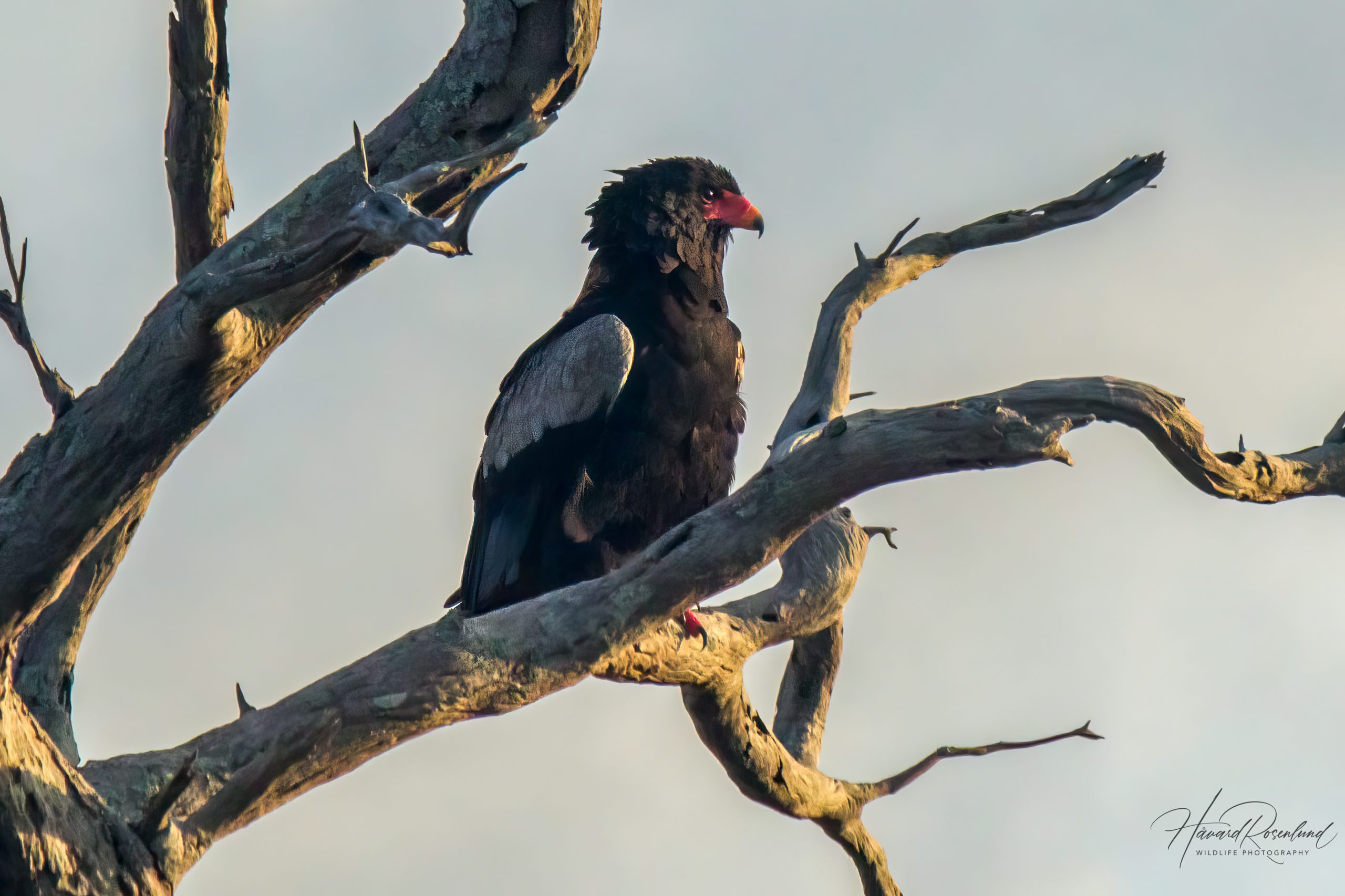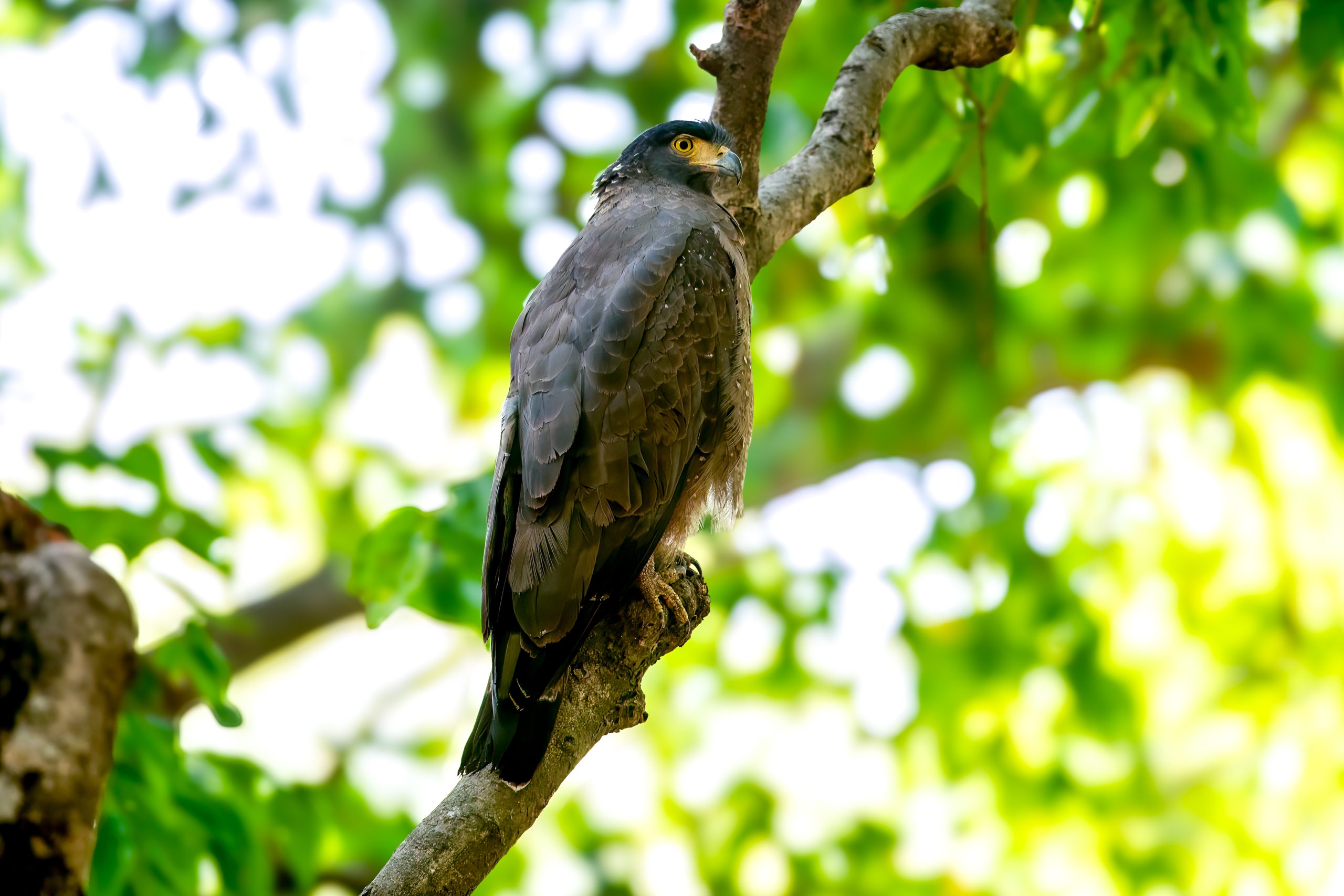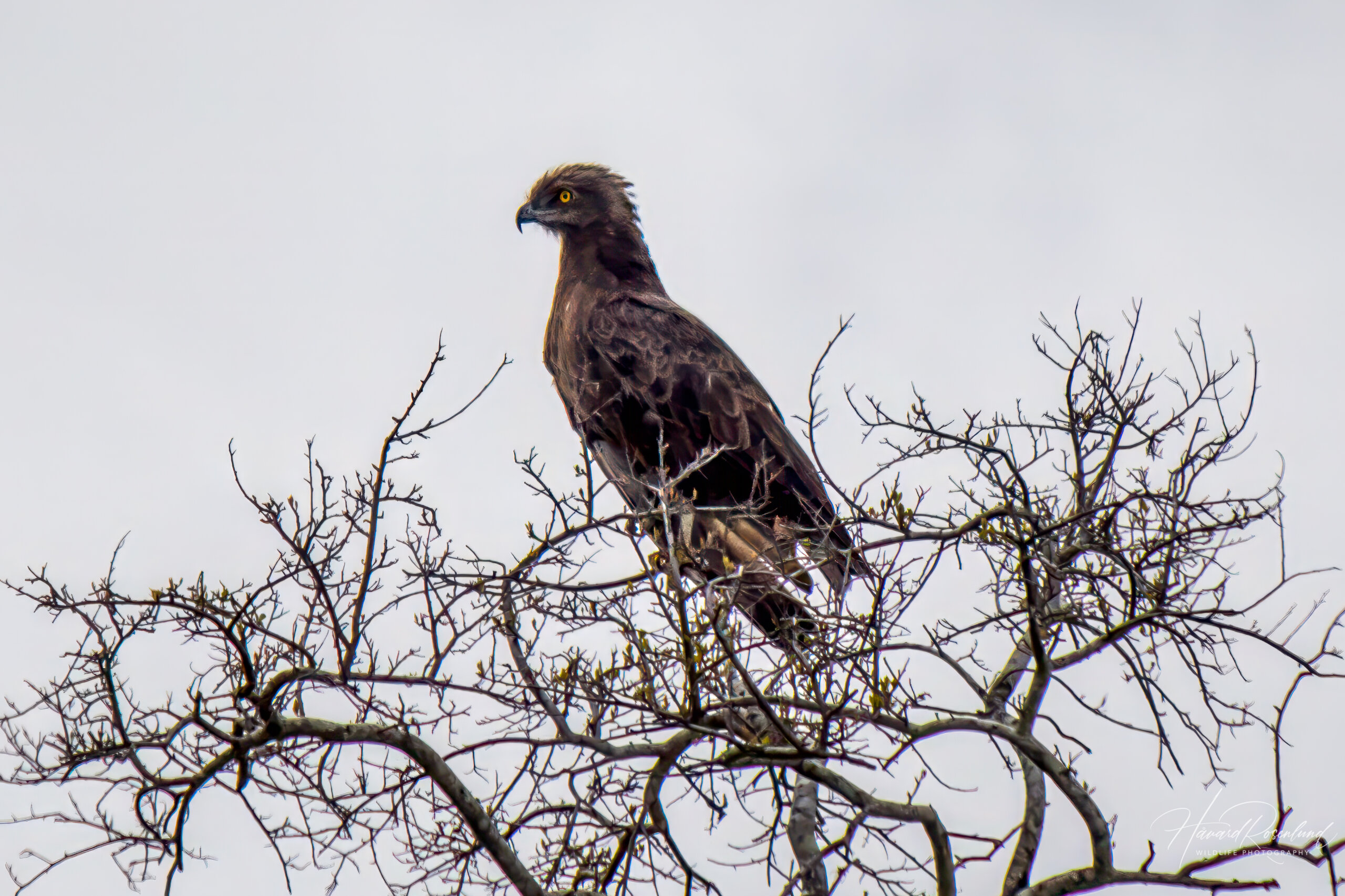Description
The bateleur (Terathopius ecaudatus) is an unmistakable and striking African raptor closely related to the snake-eagles. It is easily recognized with its red facial skin, beak, and legs, contrasting with the overall dark plumage. Head and underparts are black in color, the backside and tail tawny, and shoulders are grey. Females differ from males by having tawny secondary wing feathers. Tail is incredibly short, and along with the white and black underparts of the wings it is easily identified in flight. Females are also distinguished from males in flight by having a narrow band of black edging the mostly white wings, whereas the black bands of males are a lot broader. Juveniles are brown in color, with greenish facial skin, and have longer tail feathers than adults. It takes seven to eight years to reach adult plumage and coloration. Adult length averages between 55-70 cm (22-28 in), and the wingspan can reach up to 186 cm (6 ft 1 in).
The name bateleur comes from the French word for “Street Performer”. In French this word is also used for tightrope walkers, and the bird got its name for how it adjusts its wings from side to side as if to keep the balance while gliding. This characteristic movement in flight is also a telltale sign when identifying the species.
Diet & habitat
The bateleur is mainly found in savanna and open woodland habitats, and generally avoids dense forests and wetlands. It is often observed in flight, and as much as 80% of the day is spent on the wings gliding low looking for food. Up to 500 km (300 miles) can be covered in one day. When raining it is commonly found grounded or perched. It is both a hunter and a scavenger, and will catch mammals the size of small antelopes, birds, reptiles, insects, as well as feed on carrion, which sometimes take up half the diet. It is a fast, agile and acrobatic flyer able to catch birds in mid-air. They are also one of the first birds on smaller carcasses, such as roadkills, but will leave when larger eagles and vultures approach.
Nesting
Bateleurs are monogamous and territorial, and home ranges was found to be between 25-35 km² during a study done in Kruger National Park. Territories are heavily defended against rivals. A breeding pair form strong bonds for life through acrobatic aerial courtship rituals. Breeding season varies within its range, with December-August in southern Africa, September-May in West Africa and year-round in East Africa. Nests are large and robust and made up of twigs and leaves. Only one egg is laid and incubated for 43-59 days by the female. It takes the chick 90-190 days to leave the nest. The chick will stay within the territory for a few months before being chased off by the parents. Sometimes unpaired individuals, presumably previous offspring, help in the rearing of young.
Status & threats
The bateleur has been in sharp decline over the last few decades and is now almost exclusively found within protected areas. It is particularly vulnerable to the poisoning of carcasses which has seen an increase in recent years. Other threats are loss of habitat and nesting grounds due to human population expansion, the use of pesticides, and trapping for international trade. In spite of its large range in Africa it is listed as endangered on the IUCN Red List. A number between 10,000 and 100,000 individuals are believed to be left in the wild.








